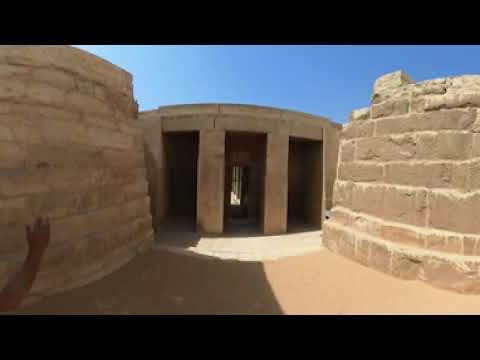This is Part 1 of the Sakkara 360 immersive Video series. 360 walking across Sakkara and into the Mastaba of Kagemni. is part of the ‘Giza Pyramids, Sphinx, Sakkara and Dahshour’ playlist.
Saqqara is an Egyptian village that contains ancient burial grounds of Egyptian royalty, serving as the necropolis for the ancient Egyptian capital, Memphis. Saqqara contains numerous pyramids, including the Pyramid of Djoser, sometimes referred to as the Step Tomb, and a number of mastaba tombs. Located some 30 km (19 mi) south of modern-day Cairo, Saqqara covers an area of around 7 by 1.5 km (4.3 by 0.9 mi).
Saqqara contains the oldest complete stone building complex known in history, the Pyramid of Djoser, built during the Third Dynasty. Another sixteen Egyptian kings built pyramids at Saqqara, which are now in various states of preservation. High officials added private funeral monuments to this necropolis during the entire Pharaonic period. It remained an important complex for non-royal burials and cult ceremonies for more than 3000 years, well into Ptolemaic and Roman times.
North of the Saqqara site lies the Abusir pyramid complex, and to its south lies the Dahshur pyramid complex, and together with the Giza Pyramid complex to the far north comprise the Pyramid Fields of Memphis, or the Memphite Necropolis.
The tomb is a mastaba type with 32 metre long sides. Within this solid structure, the various chambers take the form of an “L” shape, located primarily towards the south-east corner; a large portion therefore being a solid structure. The southern arm of the L (along the entry axis) is oriented east-west, the other arm is south-north.
The plan (seen left) gives a good idea of the complexity of this vast building, of which some rooms are still unpublished. It also shows that the lack of use of such valuable space.
The mastaba was created in limestone, local limestone for the main body and for the door and its doorposts, white Turah limestone for the rest and notably the external facing. The external face of the building must have presented a white brightness when the limestone had not yet been damaged by time. In any case, it was torn off the building a long time ago.
The blocks used measure up to two meters in length with a width and thickness not exceeding around fifty centimeters. The blocks were very carefully cut, so that the mortared joints are sometimes almost invisible.


1 Comment
Great video.
I am a fan of your videos.